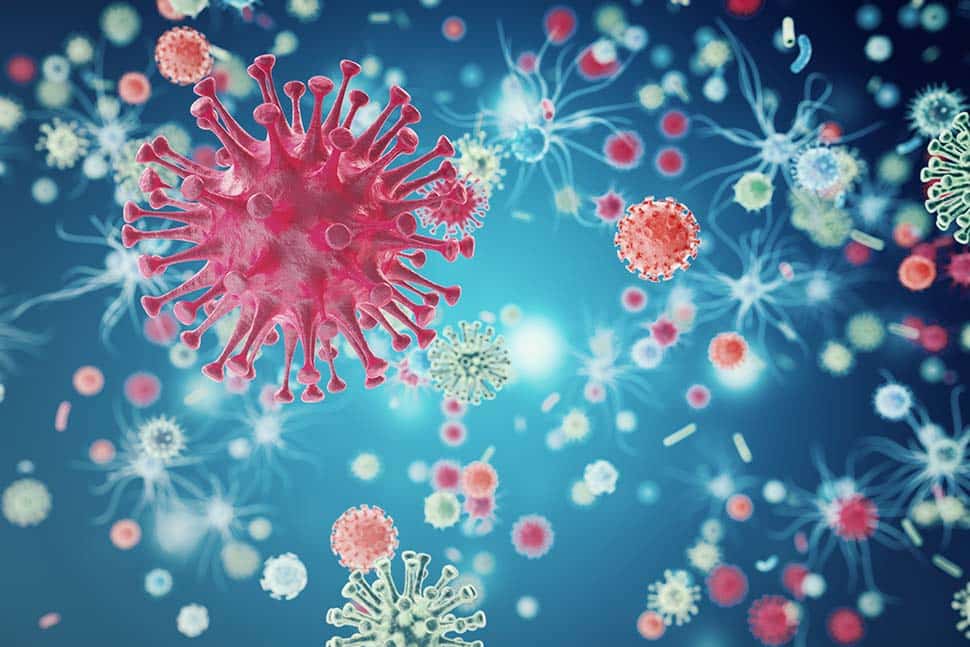Unless it’s managed properly, medical waste can present several health hazards to healthcare employees, waste workers, and the general public. Discarded needles can expose us to needle sticks and possible infection if they’re accidentally sent to recycling facilities, or if containers break open in transit. Housekeepers and janitors are also at risk when sharps poke their way out through plastic bags.
Hazardous waste can expose us to microorganisms, radiation burns, poisoning, pollution, and other dangers. Finally, improperly treated waste sent to landfills can contaminate our drinking water and environment.
Who Creates Medical Waste?
Medical waste can come from any medical or biological activity or source. For example, the prevention, diagnosis, or treatment of different diseases all can create both non-hazardous and hazardous waste.
As K.K. Padmanabhan and Debabrata Barik note in a 2018 National Library of medicine report entitled “Health Hazards of Medical Waste and its Disposal”,
“Between 75% and 90% of the waste produced by health-care providers is comparable to domestic waste and usually called “nonhazardous” or “general health-care waste.” It comes mostly from the administrative, kitchen, and housekeeping functions at health-care facilities and may also include packaging waste and waste generated during maintenance of health-care buildings. The remaining 10%–25% of health-care waste is regarded as “hazardous” and may pose a variety of environmental and health risks.”
It would be dangerous to assume that because hazardous waste does not make up the bulk of all healthcare waste that it is irrelevant. That couldn’t be further from the truth! When you consider the amount of total medical waste generated each year by hospitals and labs alone — around 5 million tons annually, according to the Association of American Medical Colleges, you begin to realize just how much hazardous medical waste there is.
The list of waste-generating facilities below includes all caregiver locations like private physician practices and dental offices, but also veterinary practices, research labs, funeral homes, and anyplace else that meets medical needs.
- Physician Practices
- Retail Health Clinics
- Dental Offices
- Urgent Care Clinics
- Veterinary Practices
- Medical Research Laboratories
- Nursing Homes
- Home Healthcare or Infusion Situations
- Funeral Homes
- Hospitals
- Commercial Offices and Buildings
As you can see, the above estimates of the amount of medical waste generated annually do not take into account all healthcare facilities we’ve just listed that also generate medical waste.
Why is Medical Waste a Problem?
It’s difficult to pick the greatest danger of medical waste. For one thing, the effects of medical waste on the environment are staggering when you consider the sheer amount of waste generated each year. But it’s also the nature of hazardous waste, especially, that makes it, in particular, a public health issue.
As our blog post “What is Medical Waste” explains, there are a multitude of types of medical waste, from radioactive waste, to infectious waste, to sharps. Each type of medical waste presents its own dangers.
For instance, if disposed of improperly, sharps can injure housekeepers and cleaning staff, potentially spreading infectious diseases along the way. Likewise, if incinerated, other types of medical waste, such as pathological waste, can spread disease and pollute the air.
Who Regulates Medical Waste?
Clearly, the dangers of medical waste present various complexities and potential issues. Luckily, there’s no shortage of medical waste regulation.
In the late 1980s, the waste was overseen by the EPA and the Federal Government. Afterward, regulations were passed by various state agencies. State health agencies and environmental programs have information about who governs healthcare waste in each state.
Several federal bodies maintain laws concerning medical waste. These include:
- The Occupational Safety and Health Administration (OSHA)
- The Centers for Disease Control (CDC)
- The U.S. Food and Drug Administration (FDA)
- The Department of Transportation (DOT)
- The Drug Enforcement Administration (DEA)
Medical Waste Tools and Resources
We’ve created a small toolbox below of various resources and medical waste solutions, from government websites and documents to laws, vendors, and educational materials.
- The EPA maintains a map-based list of links to state environmental agencies and hazardous waste programs around the country.
- MedPro Disposal provides a low-cost, fully compliant pickup, transportation, treatment, and disposal solutions for regulated medical waste, pharmaceuticals, and sharps. They also offer a mail back sharps container service and compliance training for safety needs.
- The WHO Provides a Free 308 Page Manual on the safe management of healthcare waste, including general info like definition and classification to minimization, reuse, collection, storage, and more.
MedPro Disposal Can Help You Safely Dispose of Medical Waste
Looking for an easy solution to your medical waste generation issues that will take care of everything from pickup onwards, ensuring that your medical waste is properly managed in a compliant way? Let MedPro Disposal handle your medical waste disposal.



